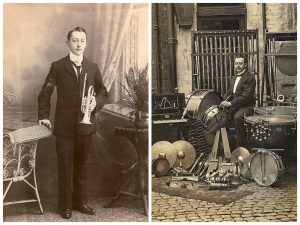Graham Barker tracks down three Leicester landmarks constructed by his relative, Victorian building contractor Frederick Major
“He was a very active man, and always endeavoured as far as possible to walk wherever he wanted to go. In particular he objected to riding in tramcars. He also had an excellent memory, and could have written an extensive history of the city in the last century.” This extract from Frederick Major’s 1924 obituary captures something of his character – still sprightly and sparky, even at the age of 92 years old.
It’s disappointing that we will never read the history of Victorian Leicester that my relative Frederick Major could have written, woven with memories gathered over his long life working as a building contractor and town councillor. In the absence of his memoirs, how can I get a clearer picture of him? Do any of his buildings survive today, I wonder?
Read on, or download the full story here: Frederick Major, building contractor in Victorian Leicester
















